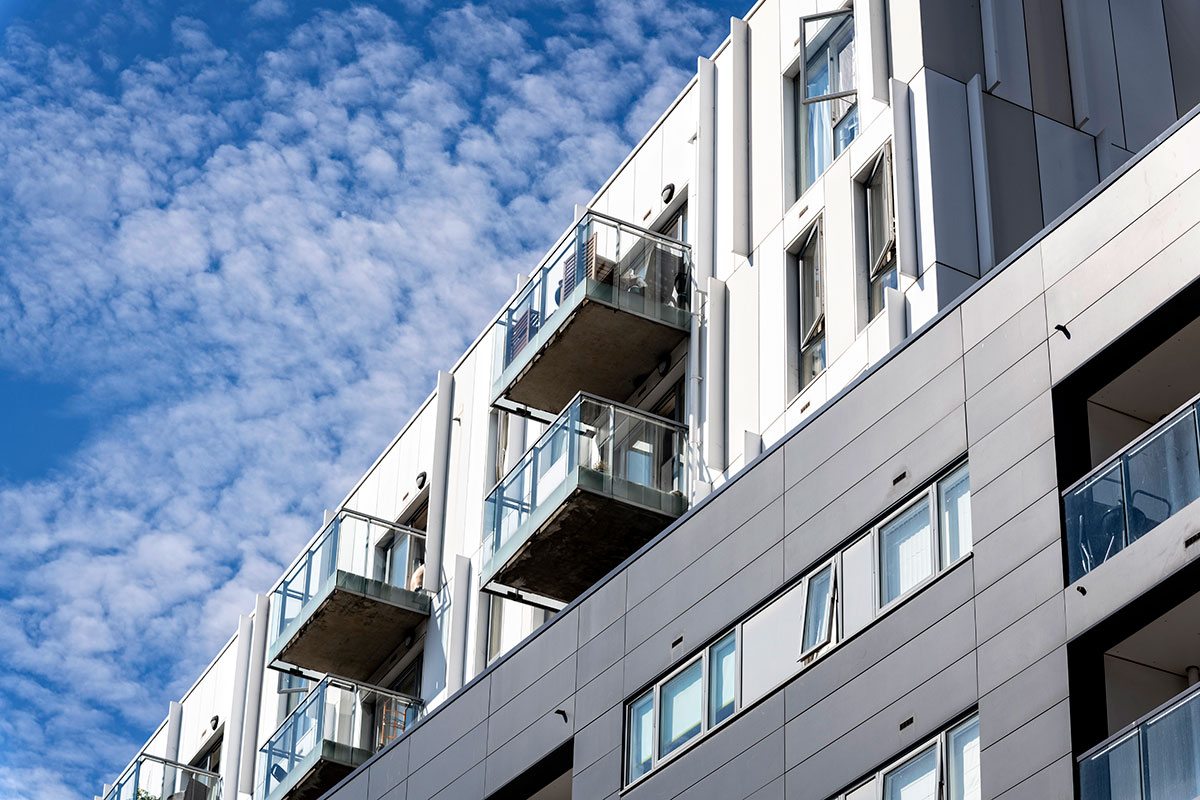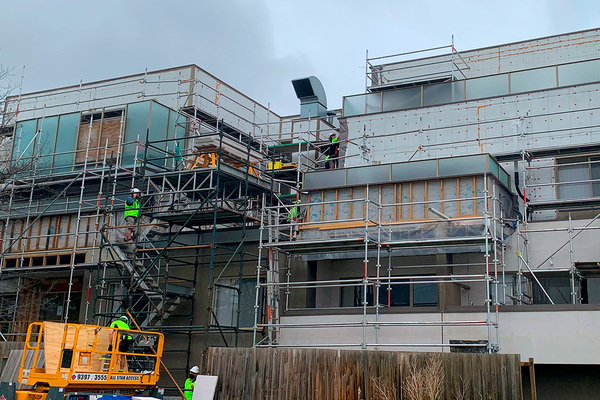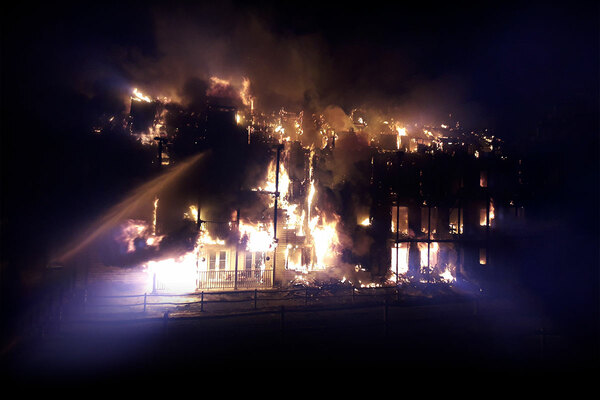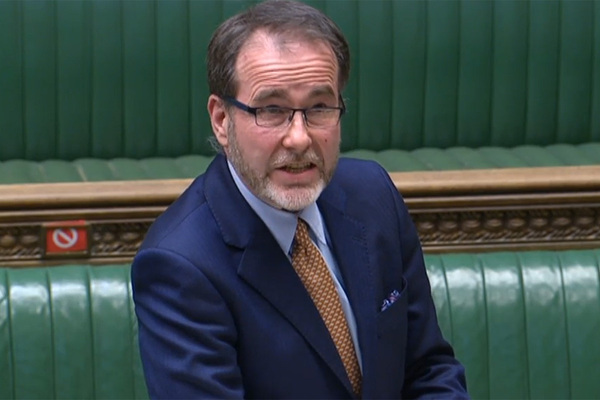You are viewing 1 of your 1 free articles
Three-quarters of cladding systems on new medium-rise buildings use combustible materials, data shows
Three-quarters of cladding systems being installed on new medium-rise buildings use combustible materials, despite leaseholders being forced to accept loans to remove them from existing buildings, industry data seen by Inside Housing suggests.
Of 66 residential projects that used rainscreen cladding systems in blocks between 11m and 18m in height in 2019 and 2020, 51 are believed to have used combustible insulation.
This comes despite a proposed government ban on the use of such materials in these buildings. A consultation on doing so closed in May last year, with no official response yet published.
The government recently announced that leaseholders in buildings in this height bracket would be forced to repay long-term loans to cover the removal of combustible cladding from their walls, rather than receiving direct government funding.
Many are currently unable to obtain mortgages because banks will not lend until the buildings have been remediated.
A spokesperson for the End Our Cladding Scandal campaign of affected leaseholders said they were “dumbfounded” that these materials were still being used in new builds.
The data – from an analysis by non-combustible insulation manufacturer Rockwool of figures from construction database Glenigan – also showed that 112 other potentially high-risk buildings had been built with combustible rainscreen systems in this period.
The data was analysed based on industry assessments of market share.
These included 76 schools, 25 hospitals, nursing homes, hospices and older people’s homes, and 11 university buildings.
Frances Maria Peacock, a chartered architectural technologist and fire engineer, told Inside Housing she was “concerned” by the data but not surprised.
“These combustible products tend to be cheaper and it’s become a standard thing to use them in the industry,” she said. “A lot of people are thinking that if it doesn’t fall directly in the ban, why shouldn’t they use it.
“But it does worry me. If you’ve got a low-rise building, there’s more of a chance of people getting out but the risk is still there especially for people with disabilities, older people or small children who cannot evacuate as quickly or easily as others can.”
The government banned the use of combustible materials in buildings above 18m in 2018. A senior civil servant later told a conference that the height threshold was picked because “we haven’t got time to come up with a better number”.
In January 2020, housing secretary Robert Jenrick announced plans to reduce it to 11m – following a series of fires in blocks below 18m, including in Bolton and Barking, east London.
But the consultation on doing so closed in May 2020 and the government has not yet published a response.
As it is, current building guidance says there are “no provisions” restricting the use of combustible materials in buildings below 18m, provided they are more than 1m from the boundary of another property.
Julie Fraser, a spokesperson for the End Our Cladding Scandal campaign, said: “We are dumbfounded by the fact that hundreds of ‘medium-rise’ buildings are still being constructed using combustible insulation.
“One of the clear issues that has been uncovered by the building safety crisis is that buildings below 18m have been constructed with even less regard for important safety measures, due to the weak regulations in place that allowed developers to save a few pounds.
“As it stands, this two-tier system is set to continue, and will mean new homeowners will also potentially be trapped.”
The Grenfell Tower Inquiry has recently heard how serious fire test failures in systems containing combustible insulation products were suppressed by manufacturers for years.
Manufacturers of these products argue that tests since the fire show they can be used safely in certain systems. However, there is not even a restriction limiting their use to tested systems below the 18m threshold.
A spokesperson for Rockwool said: “The data shows there are buildings all around our communities – whether it’s mid-rise apartment blocks, or schools, hospitals and care homes – that are still being wrapped in combustible insulation and cladding on construction sites today.
“These buildings are our homes and places that we rely on for essential public services. We are still waiting for a response from the government on its consultation to extend the ban, which took place last year, and we urge them to act now to address this this major public safety gap.”
A spokesperson for the Ministry of Housing, Communities and Local Government said: “The risk from fire is higher in taller buildings, so it’s right that we have focused on these buildings first.
“All materials must pass relevant safety checks before they can be used on a building. Our Building Safety Bill, which puts forward a new regime for regulating construction products, will ensure even more stringent oversight of products that are used on homes in future.
“We continue to analyse the responses to our public consultation to expend the scope of the ban of combustible materials in and on buildings, and will publish the government response in due course.”
Asked by Inside Housing what “relevant safety checks” applied to medium-rise buildings, the spokesperson pointed to the overall statutory duty to “adequately resist” the spread of fire. This is not a specific requirement for a safety check.
Sign up for our fire safety newsletter
Already have an account? Click here to manage your newsletters













